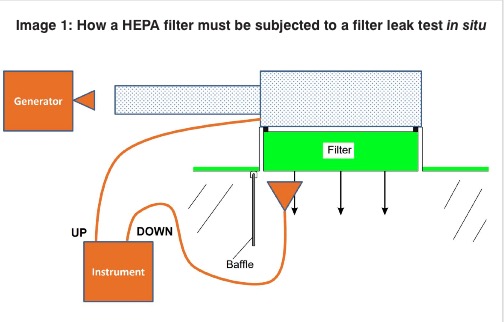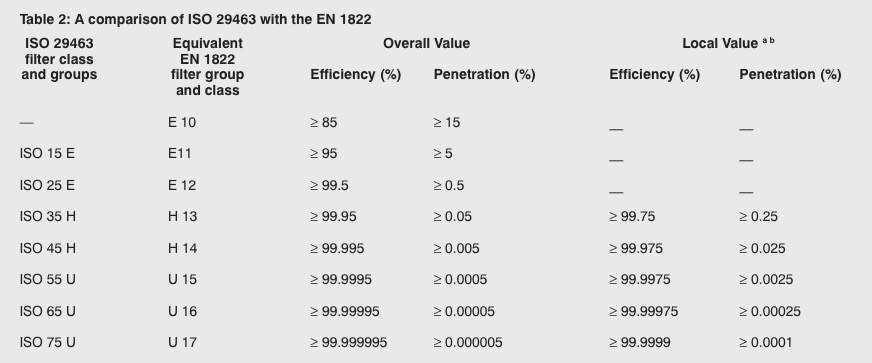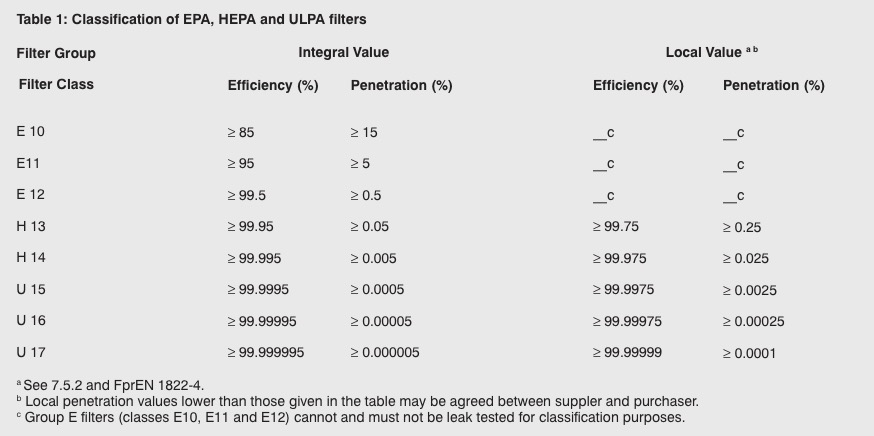Cleanrooms are used in production processes where requirements are set for the cleanliness of the air. This is a contamination control tool needed to deliver clean products. We use various barriers for the right contamination control strategy. One of these barriers are the HEPA filters.
The function of a HEPA filter is to filter supply air.
These filters are also known by many people as absolute filters or final filters. The same is always meant, these filters are used where the highest demands are made on the cleanliness of the supply air. They serve to separate solid particles, aerosols and microorganisms from the air supplied to the cleanroom.
HEPA filters can be found in all cleanroom applications; in operating rooms and laboratories, but also in many critical industrial applications, such as microelectronics, precision mechanics and optical industry, space, pharmaceutical and food industry
HEPA filters can be found in all cleanroom applications; in operating rooms and laboratories, but also in many critical industrial applications, such as microelectronics, precision mechanics and optical industry, space, pharmaceutical and food industry.
This shows that the HEPA filters make an essential and important contribution to the quality of the supply air to the cleanroom. You understand that this important element for your cleanroom must function properly.
How can you guarantee this? How do you know that your HEPA filter is working properly?

Starting point
In practice, many people seem to think lightly about this. I have HEPA filters on the supply anyway, so my product is assured of clean air. And the filters also have a class H14, which is more than enough to guarantee the quality I need.
Very often, however, two things are confused. Indeed, you have ordered a HEPA filter with H14 quality. But whether it works properly, this filter qualification says nothing about that. First some theory.
Quality of HEPA filters
A factory test always takes place at the factory where the HEPA filters are produced. The test is performed under the standard EN 1822.
The standard describes the testing of the filtration properties for absolute filters in the filter production company, i.e. Efficient Particulate Air filter (EPA), High Efficiency Particulate Air filter (HEPA) and Ultra Low Penetration Air filter (ULPA). For the in-situ testing of absolute filters in their built-in condition, the NEN EN ISO 14644-3 remains unchanged necesarry.
The standard consists of 5 parts:
- Part 1: Classification, performance testing, marking
- Part 2: Aerosol production, measuring equipment, particle counting statistics
- Part 3: Testing flat sheet filter media
- Part 4: Determining leakage of filter elements (scan method)
- Part 5: Determining the efficiency of filter elements
Table 1 (see next page) shows the filter classifications according EN 1822. In this standard with its chapters and annexes you can find everything about methods of testing the HEPA filters at the manufacturer’s site.

In addition to this European standard, there is an ISO standard. Table 2 (see next page) shows a comparison of ISO 29463 with the EN 1822.
Both standards are used, with the EN1822 leading in Europe and Asia. So much for the theory behind the HEPA filter qualifications.

HEPA filters installed
And then comes the practice. The HEPA filters arrive at your construction site and many things can go wrong. First of all, the filter can of course be damaged during transport. Is the filter then stored correctly on the construction site? Then comes the moment when filters can be mounted. Is the filter correctly transported from storage to the installation site? Is the filter installed correctly? Is the filter in the filter housing correctly installed and is it pressed correctly?
These are all points where things can go wrong with your HEPA filter and the protection of your product with clean air turns out not to be as good as you thought. That is when the filter leak test comes into play. A HEPA filter is tested at the factory for its qualification, but that says nothing about the fact that your HEPA filter will function properly. This means that each filter must be tested once more in situ. This is not a qualification test but an in situ test. The in situ test is nothing more or less than a leak test.
And this is where the ISO standard 14644-3 comes in handy. In the text block below you see the original text as mentioned in the ISO 14644-3. See the original text in the quote to the right.
Methods
These tests are performed to confirm that installed filter systems with integral efficiency of 99.99% or higher at most penetrating particle size (MPPS) are properly installed by verifying the absence of bypass leakage in the installation, and that the filters are free of defects (small holes and other damage in the filter medium, frame, seal and leaks in the filter bank framework). Portions of the test methods given in B.7 have been adapted from IEST-RP-CC034.4.
These tests are not used to determine the efficiency of the filer medium.
From this, it is clearly indicated that this is a leak test to verify that there are no leaks from the installation of the HEPA filter and also not from the filter medium.
The determination of efficiency and classification should be carried out with a liquid, oil test aerosol
Among other things, the alternative method of performing a leak test (scan method) is with a solid aerosol, polystyrene latex (PSL). This is especially important for microelectronics where in many cases the use of an oil test aerosol is undesirable or even impossible due to evaporation.
However, the determination of efficiency and classification should be carried out with a liquid, oil test aerosol as described in part 1. In practice, therefore, if there is a mandatory requirement for a fixed test aerosol, only a scan test will be carried out and the efficiency determination and classification (with statistical evidence) will have to be carried out on separate filters as a type test. Also the detailed description for absolute filter (made of micro glass fibre) of the efficiency determination in the MPPS (Most Penetrating Particle Size).
In the introduction, it is pointed out that different rules apply to membrane filters and filters with charged synthetic medium. Membrane media are increasingly being used in microelectronics, where the use of microfibre in various processes leads to the unwanted release of boron. Membrane media has an MPPS below 0.1 μm. PTFE membrane media has an MPPS of 0.07 μm or 70 nanometers.
Sequence of filter classification and testing
The diagram below shows when and at what time which standard is applied.

HEPA filter leak testing
The ISO standard 14644-3 clearly describes how a HEPA filter must be subjected to a filter leak test in situ.
Cleanroom testing has developed into such a field that the people involved in it must be certified, also to guarantee the companies that have these tests carried out that the outcome of testing the cleanroom that is so important to them , is also reliable.
Measurement technicians are an indispensable link in the correct testing and validation of the cleanroom. In addition, they have an important function because they essentially approve the cleanroom or check whether it still meets the technical requirements. No end user wants the measurement technicians to make mistakes when measuring the room.
Thus an EN 1822/ISO 29463 followed by ISO 14644-3 performed by a certified measuring technician gives you the best guarantee of a good functioning of your HEPA filter.
Where can I find more information?
The CTCB-I offers a certified course. The CTCB-I stands for Cleanroom Testing and Certification Board - International.
This training is internationally certified by the ICCC, International Confederation of Contamination Control Societies. The course material is available in English and continuously updated according the latest standards.
